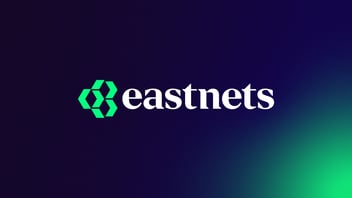Why is real-time sanction monitoring an essential compliance requirement today, and why is the regulatory pendulum moving in this direction?
Fast payments mean fast monitoring is needed to prevent fraud, and nothing is faster than real-time monitoring. The much-needed improvements in AML measures and sanction monitoring have led to the development of real-time sanction and transaction monitoring and real-time watchlist updates -- vital tools in the anti-financial crime toolkit. These essential innovations provide the means to prevent financial crime and comply with the ever-stringent financial regulations. Eastnets looks at why real-time sanction monitoring is needed and how to maintain compliance with anti-financial crime regulations as they adapt to the threat of the changing financial landscape.
What is real-time sanction monitoring, and why is it needed?
Financial crimes are some of the most innovative and complex crimes on the planet. PwC’s Global Economic Crime and Fraud Survey for 2022 shows the levels of financial crime, with over half of organizations experiencing fraud in the previous two years -- the highest level recorded by PwC in over 20 years. This level of fraud is unsustainable. Even though financial crime is a law enforcement priority worldwide, the levels of fraud undermine global financial systems, impeding economic growth and causing massive financial losses to FIs, businesses, and people. The amounts associated with crimes such as money laundering are staggering. The UN Office on Drugs and Crime estimates money-laundering amounts to global losses of around 5% of global GDP, or $800 billion to $2 trillion annually.
New processes and technologies are only exacerbating the situation. Digital channels and real-time payments are ideal for money laundering and other financial crimes. For example, real-time payments (RTP) have grown by over 63%, with almost 28% of all transactions being real-time. According to the Faster Payments Council, 75 countries are using RTPs. Recent research found that 71% of FIs have seen an increase in consumer account takeover (ATO) using RTP in 2022, and 62% said consumer authorized push payment (APP) fraud via RTP rails had increased. This increased risk of financial crime has focused regulatory attention.
Real-time sanction monitoring identifies persons of interest who may be involved in elaborate money laundering rings. This dynamic, on-the-fly checking level is critical for AML regulations and counter-terrorism financing (CTF) laws. But real-time monitoring also provides the data needed for the stringent reporting requirements of regulations such as suspicious activity reports (SARs).
In the past, real-time monitoring was not needed as the process to check for unusual patterns indicating money laundering matched the slower rate of transactions, with checks typically being made at the end of each day. However, faster payments and digital account pathways mean conventional slow and inflexible validations risk missing money laundering signals. One problem area is comparing financial and personal data to sanctions lists. The ability to check current sanctions creates pressure and introduces considerable disruption and risk to the operation. Conventional watchlist updates do not ensure the authenticity of the data as human intervention, unreliable and manual processes, and older technologies compound errors and delays: manual and scheduled updates make it almost impossible to ensure that the sanction lists are up-to-date and meet regulatory requirements. Therefore, fully automated processes and tools have been developed to meet this challenge.
The result is real-time sanction monitoring, designed to fit the patterns and speed of modern account generation and real-time payments. Real-time sanction monitoring provides the tools to scrutinize watchlists, to ensure that regulations are upheld.
Advanced real-time monitoring solutions provide holistic on-the-fly checks, including real-time watchlist updates and sanction monitoring, to ensure current checks on persons of interest. Sanction lists, such as the UN, OFAC, EU, HMT, DFAT, and many more, are used to perform these checks.
Regulations stipulate real-time sanction monitoring
Sanction screening helps FIs comply with AML regulations: by screening against sanctions lists, politically exposed person lists (PEPs), and other data. Real-time sanction monitoring is a powerful way to comply with specific requirements of many international and national regulations and standards, such as the Financial Action Task Force (FATF). There are 40 FATF recommendations on AML and CFT. This provides a complete set of countermeasures covering the criminal justice system, law enforcement, the financial system, regulation, and international cooperation. Individual countries, regional and international bodies have endorsed and adopted these.
The FATF, for example, has several recommendations that require sanction screening. FATF Recommendations 12 and 22 Politically Exposed Persons (PEPs) advise using PEP-sanction screening to ensure an FI knows the associated risks. The FATF, in its guidance for the banking sector on a Risk-Based Approach, states that:
“...banks should take measures to comply with national and international sanctions
legislation by screening the customer’s and beneficial owner’s names against the UN and other relevant sanctions lists.”
However, sanction list updates are challenging to ensure currency during checks. Eastnets ChainFeed uses blockchain technology to complete sanction list updates in real-time automatically. This real-time sanction monitoring capability is vital in maintaining compliance, as most manual watchlist updates happen once a day; there must be access to current sanction updates to avoid breaches and fines..
Real-time monitoring for real-time fraud
Sanction screening and transaction monitoring are two sides of the same coin. Both need to be done in real-time to have any chance of identifying the fast pace of modern financial crimes. To maintain up-to-date checks, AI and automation can help prevent fraud and maintain compliance with regulations as they morph to take new technologies and threats into account. Solutions such as Eastnets ChainFeed and SafeWatch Screening work in harmony to continuously monitor transactions, cutting the risk of a financial crime occurring and, in doing so, ensuring compliance with AML regulations.





